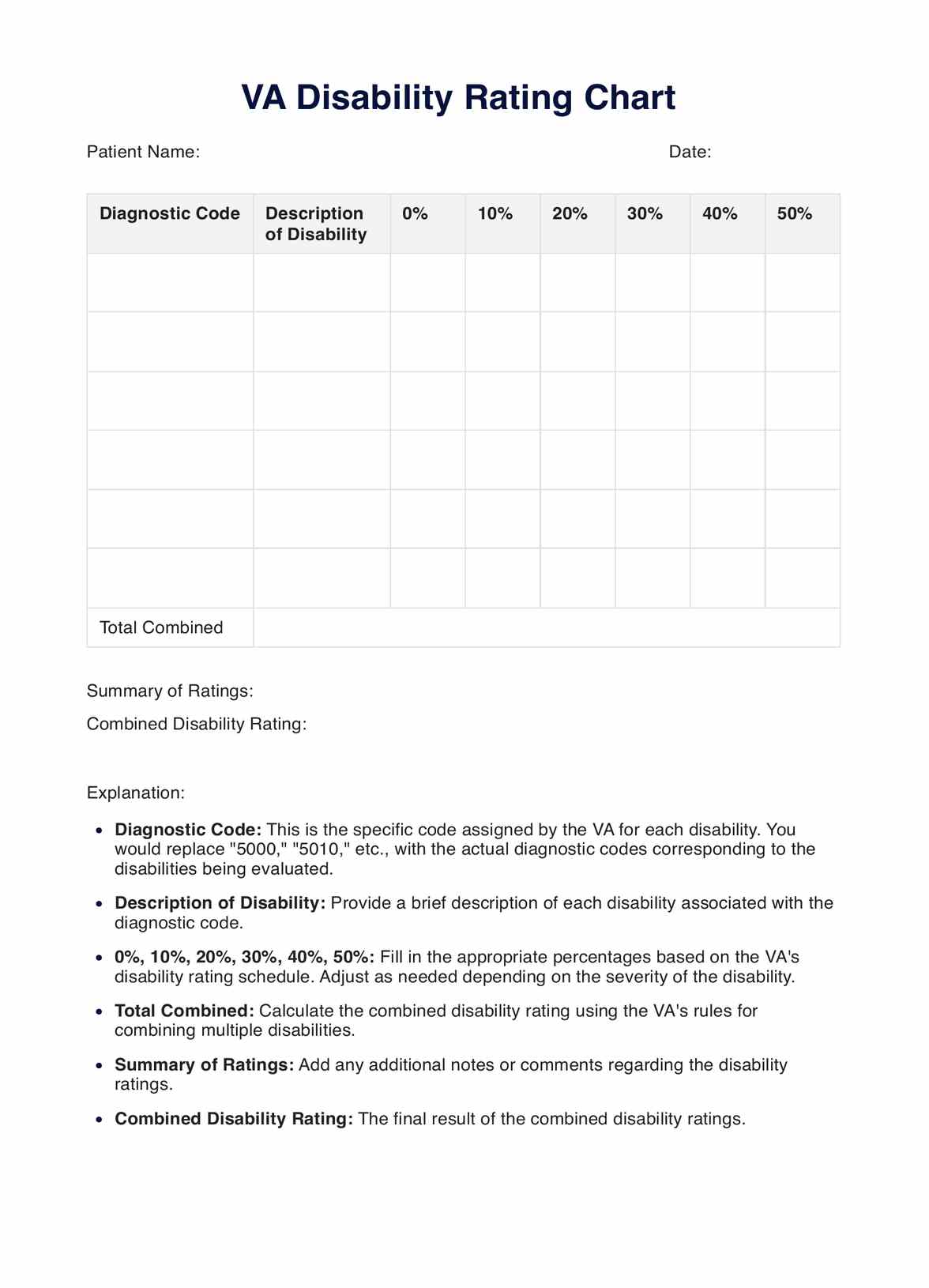To create a VA Disability Rating Chart template, gather medical records, familiarize yourself with the VASRD criteria, and organize disabilities with corresponding percentages. Utilize Carepatron's user-friendly app for a seamless and efficient chart creation process.

VA Disability Rating Chart
Download a free PDF template of a VA disability rating chart and an example to help you understand and track your VA disability ratings.
VA Disability Rating Chart Template
Commonly asked questions
VA Disability Rating Chart templates are used during initial assessments, claims preparation, periodic reviews, and for educational purposes. Carepatron's templates streamline this process, providing a practical tool for veterans and practitioners.
These templates are employed to visually represent the severity of disabilities, aiding in claims advocacy and communication with healthcare practitioners. Carepatron's software ensures a user-friendly experience, simplifying the utilization of these templates.
EHR and practice management software
Get started for free
*No credit card required
Free
$0/usd
Unlimited clients
Telehealth
1GB of storage
Client portal text
Automated billing and online payments











